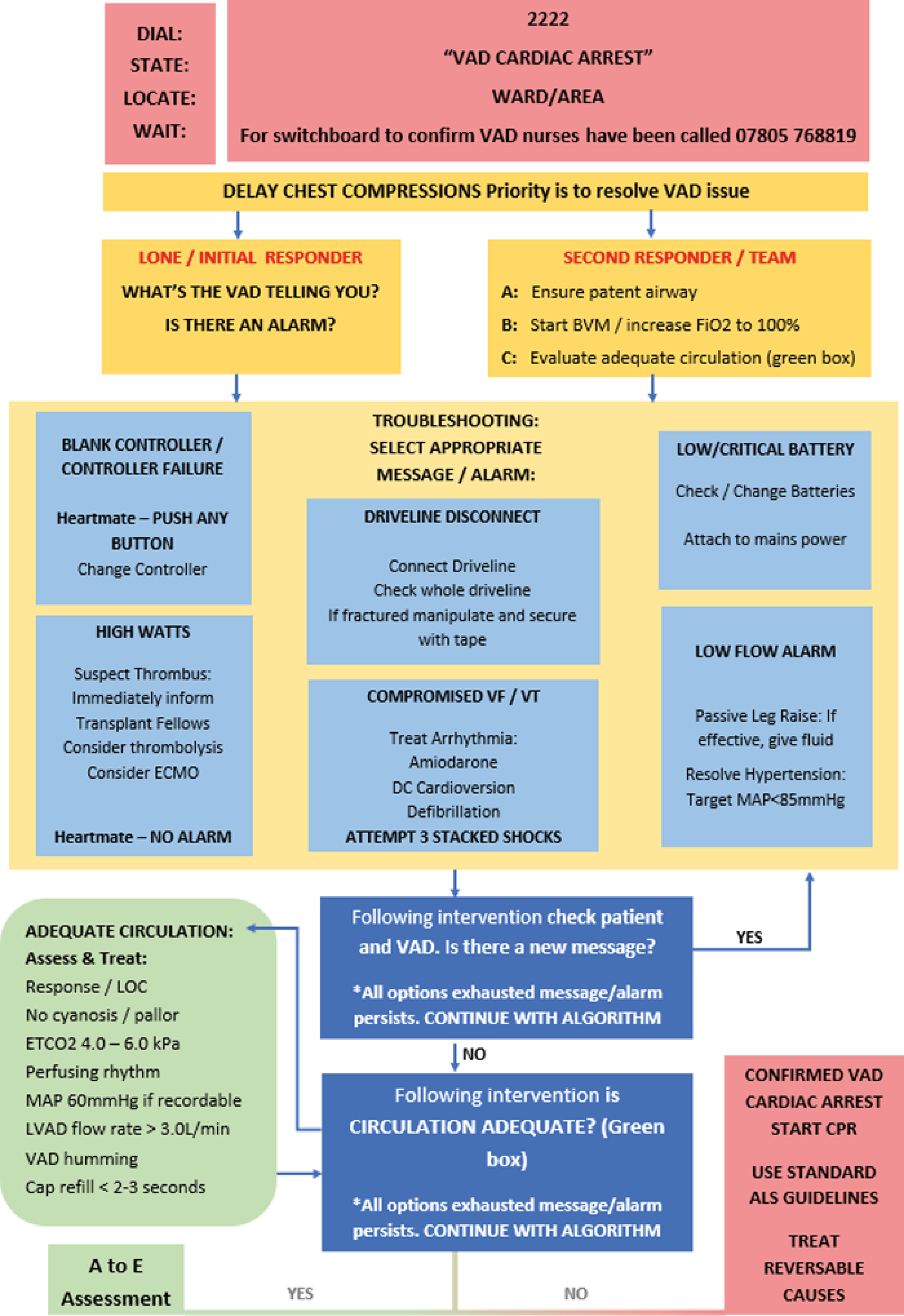
In total, 70% of patients implanted with a left ventricular assist device (LVAD) will experience a life-threatening emergency within the first year of implantation [1,2]. Complexities surrounding deterioration and resuscitation in these patients are clinically vast and intimidating to the staff who encounter them. This may present significant challenges for staff caring for this complex patient group and often leaves them feeling anxious and insufficiently prepared when presented with LVAD deterioration. A literature review revealed a lack of clear guidance for the management of in-hospital LVAD emergencies. As a result, an organization-wide project was launched to design the first ever, non-brand-specific, LVAD emergency algorithm. A multi-disciplinary clinical simulation programme was fundamental to the evolution of the tool and the clinical decision-making, competence and confidence of the staff group.
Develop and introduce an emergency algorithm that provides a standardized approach to LVAD patient emergencies.
Increase staff confidence, competence and clinical decision-making.
Use simulation to facilitate and enable staff to solve complex problems using standardized assessment and management while ensuring transparency and equitable treatment in situations of rapid clinical deterioration.
The LVAD Simulation and Algorithm project commenced through the trial of an out-of-hospital algorithm developed by Bowles that was adapted for in-hospital use. Direct feedback from staff attending low-fidelity ward-based simulations was used to consistently develop and adjust the algorithm from a three-page flowchart to a single page (Figure 1). The invaluable feedback and constant observation of the algorithm through simulation has allowed for the evolution of a clear, concise tool that provides staff of all skill sets with a defined course of action during an LVAD emergency.


Simulation has proved to be essential in developing this innovative, unique, patient safety tool that has increased staff confidence and competence throughout the organization while providing a safe place for clarifying questions. The single-page algorithm continues to be practised via simulation weekly with an ever-increasing multi-disciplinary presence. Staff report increased confidence not only in dealing with LVAD emergencies but also in their ILS and ALS skills, all of which increase safety, quality care for patients. This one of a kind algorithm is now finalized and awaiting organizational review, following which a complete evaluation of its effectiveness will be conducted.
1.
2.